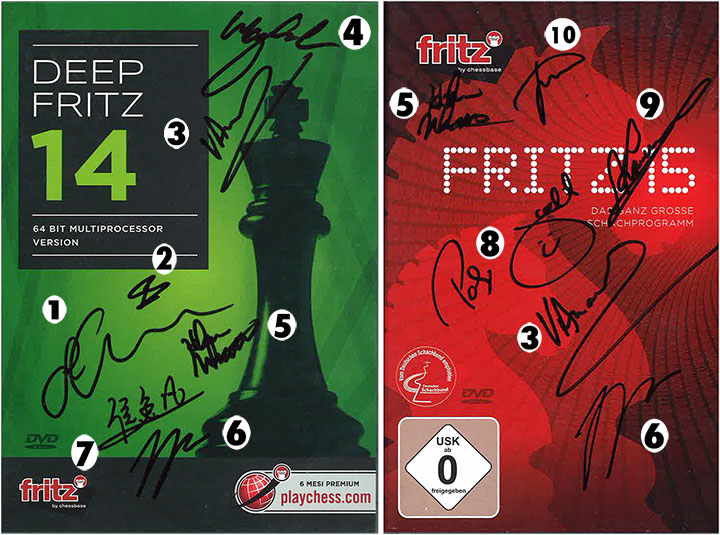.jpeg)

.jpeg)
Thanks to all those that participated in our recent survey about Speelman's column. You're feedback and ideas are much appreciated. Congratulations to ChessBase reader and Account-holder "novo" who was selected in a random drawing for a DVD autographed by World Champions and other elite GMs like these!

(Click or tap to enlarge image)
Now on to this week's column...
 This week I'm going to my “back catalogue” for a couple of endings by Michael Jones an Englishman whose games I used here back in February 2017. Michael sent three games then, and I discarded an interesting minor piece endgame which appears below.
This week I'm going to my “back catalogue” for a couple of endings by Michael Jones an Englishman whose games I used here back in February 2017. Michael sent three games then, and I discarded an interesting minor piece endgame which appears below.
At that time, seven piece tablebases weren't as widely available as now and I'm able to confirm definitely some analysis of one of his other games, which I strongly suspected but wasn't absolutely certain of at the time.
Michael, who is now 33, loves travelling and bridges possible language gaps by playing chess. He wrote two years ago about how, “I've played everywhere from the balcony of a youth hostel in Frankfurt and a thermal bath in Budapest, to a park in Kutaisi during Georgia's Independence Day celebrations and a bazaar in Kyrgyzstan.” He recently moved to Walsall but hasn't yet had time to join the chess club. He sent copious notes, which I've added to as JS.
In addition, there are two English games from the European Team Championships which by a huge coincidence ended up in almost exactly the same rook ending.
I was streaming during the first of them David Shengalia v Gawain Jones and was asked to check my endgame books. Somewhat to my surprise I found the exact (generic) position in "Basic Endgames" by Yuri Blashov and Eduard Prandstetter where they noted that with the king defending on the right square (g7/g2) it's a draw. Two days later, David Howell had the same ending but his opponent put his king on the right square and held.
Click or tap any game in the list to switch
Did you enjoy the column and instructive analysis by GM Jonathan Speelman? Do you wish you could have a world-renowned grandmaster analysing your play? You can!
To submit your games just upload a PGN or ChessBase file (.pgn or .cbv archive), along with your name and e-mail address. Send one success story (Ecstasy) and one loss (Agony).
Tell why you chose them, where or when they were played. Please do include your email address, so Jon can reply, and preferably a photo of yourself for our article.
If your game is selected Jon will contact you personally, and not only will you get free detailed commentary of your games by one of chess’s great authors and instructors, and former world no. 4 player, but you also win a free three-month ChessBase Premium Account!
A three-month Premium subscription to ChessBase Account means you get: